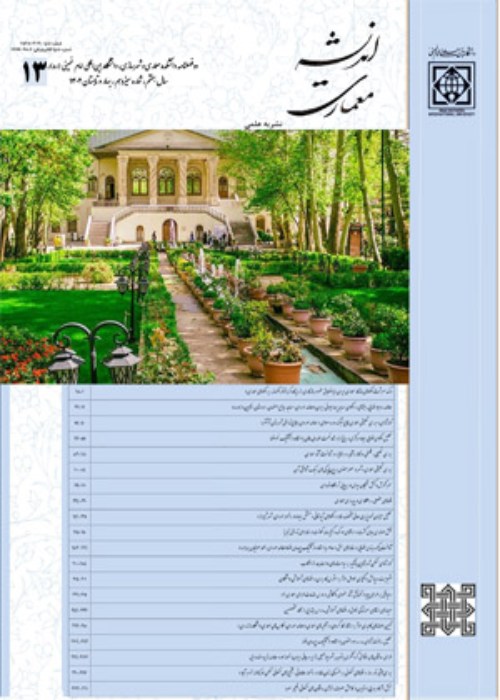The effect of components of the perceptual dimensions of the public on the architectural semantic quality of contemporary monuments
In any architectural space, one of the most important issues is how to perceive and understand the body of architecture in the minds of the audience. Is it sound that every architectural body creates the same shape and perception of all human beings, or is there an essential difference in this matter? The main question of the research is what was the quality of this perception in the architecture of monuments?Research Question: What is the mechanism of the perceived quality of contemporary monuments? Which of the following components is more important in the quality of perception of contemporary monuments from the perspective of the audience of these works?
The present study is a descriptive-analytical study that used a survey research design. The statistical population included architecture students of different universities in the country. The stratified random sampling method was used to determine the statistical sample size of Cochran's formula at the level of 0.05. According to the statistical population (1700 people) and the determined coefficients, the statistical sample size was 303 people. To collect data, a closed questionnaire was used. One-way analysis of variance and Pearson r correlation test was used for research analysis. According to the theoretical foundations and literature of the subject, in the present study, three general categories of semantic quality, aesthetic quality, and functional quality can be identified, each of which is divided into sub-components.The
Regarding the dimension of identity and originality of semantic quality, the findings of the regression model show that the quality of mental aesthetics (0.42) and the quality of performance (0.24) have a considerable effect and causal relationship with the dimension of identity and originality of semantic quality. Regarding the sense of the belonging aspect of semantic quality, the findings of the regression model show that the quality of performance (0.32) and the quality of mental aesthetics (0.27) have the most effective impact and causal relationship with the dimension of sense of belonging to the semantic quality of the building. Regarding the readability dimension of semantic quality, the findings of the regression model show that the quality of objective aesthetics (0.41) and the quality of performance (0.34) have a considerable effect and causal relationship with the readability dimension of the semantic quality of the building. Comparison of the findings shows that the quality of services (ie security, strength, and services provided in the building) has a causal effect on all dimensions of the semantic quality of the building, among which has the most effective impact on the readability dimension of the building. But about the mental and objective aspects, the aesthetic quality of the findings is different. In this way, the quality of existing aesthetics has the most effective impact on the legibility dimension of semantic quality and does not have a significant effect on the aspects of originality and identity of semantic quality. While the mental aspect of aesthetic quality has a considerable impact on the dimension of originality and identity of semantic quality and does not have a significant effect on the readability dimension of semantic quality. Also, the objective aspect of aesthetic quality has no important outcome on the sense of belonging aspect of semantic quality. While the mental aspect of aesthetic quality has a significant and causal effect on the sense of the belonging dimension of semantic quality.
-
Investigating and Explaining the Components of the Green Movement Theory in Designing Green Facades for Third-Millennium Cities
Sahel Sadeghi Abadi, *
Bagh-e Nazar, -
The Impact of the Paradigm Shift on the Schools’ Architecture Considering Adaptive Studies of Schools of Tabriz and Urmia in the Era of Qajar and Pahlavi I
Zahra Farzaneh, *, Arash Saghafi Asl
International Journal of Applied Arts Studies, Aug-Sep 2024


